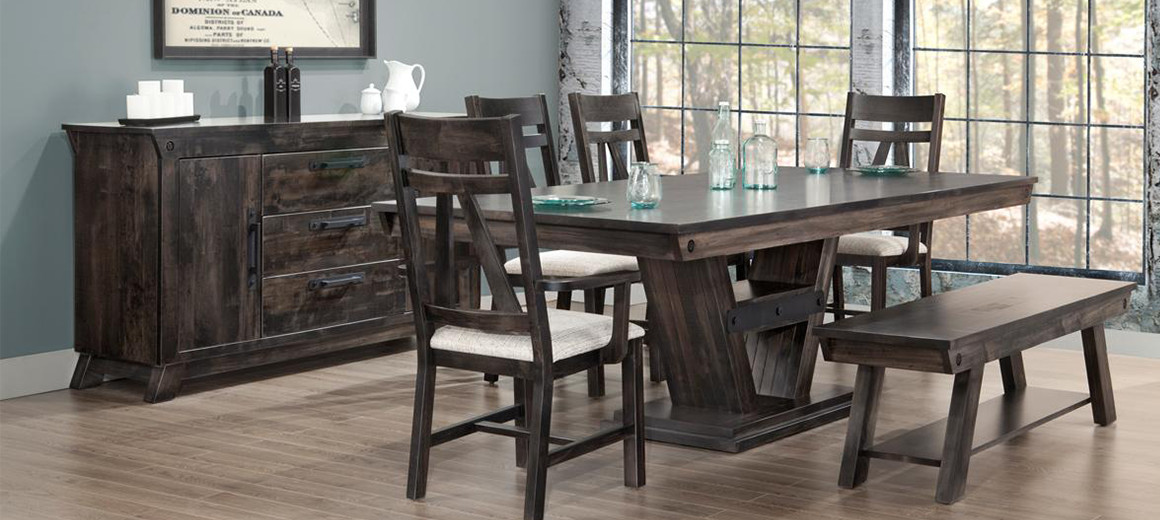Handmade furniture can be an investment that genuinely lasts generations. However, it can also be a facade to hide poor quality craftsmanship and attach a premium price tag to it. Here are five essential tips when buying handmade furniture so that you make the right choice. We’ll give you some pointers on how to determine whether or not handmade furniture is well-made and worth your money and the warning signs that it is poorly made.
Understand What It Is Made Of
Handmade wood furniture from well-established furniture galleries such as Birchwood can be the highest level of quality. Handmade furniture is typically made from more expensive materials, but that makes it durable enough to last for generations. Because the furniture is made from hardwoods by hand, each piece is truly unique. They’re rugged enough to be refinished and repainted if your tastes change. However, it is possible to get poor quality hardwood furniture, too.
Veneer looks like hardwood but isn’t. Veneer is a chemical rich fiberboard covered by a layer of somewhat better wood. It is lighter and cheaper than hardwood and is also more prone to dents, scratches, and peeling. You could repaint it, though mileage varies.
Most retailers won’t try to lie to you and say veneer furniture is made from hardwoods. Instead, they’ll label it “mid-century” or “rustic.” Just because they say it is made with a wood finish, doesn’t mean that wood is underneath the surface. Ask if you’re in doubt.
Particle board is the hallmark of mass-produced, cheap furniture. A lot of the cheap do-it-yourself wood furniture is made from particle board. When you’re shopping for handmade furniture, avoid veneers and stay away from particle board furniture if you can.
Check the Finish
A sign you’re dealing with lousy furniture is poor-quality finish. If the finish is bubbling, swelling or cracking, don’t buy it. The finish of good quality furniture will be in one piece and smooth to the touch. You shouldn’t feel rough spots or see impurities. The wood grain should be visible unless it’s been painted over. The light should reflect in the finish but not bounce off of it like a mirror. If it’s been painted, the paint job should be smooth and even, not look like a DIY project.
Inspect the Joints
High-quality handmade furniture is held together with dowels (wood pegs in slotted opposing holes), dovetails (interlocking teeth), mortise and tenon (narrow piece inserted into another), Z-clips, or screws. The joints should only have a few thousandths of an inch between the faces of the joint. There shouldn’t be big gaps or ragged edges at the joints. It will not be glued, nailed or stapled together.
Test Its Functionality
An excellent way to determine the quality of a piece of furniture is to test it out before you take it home. Open the doors of a sideboard, and verify that they stay open. Close the doors, and verify that the latches latch correctly, the doors close completely, and the doors themselves sit evenly. Swing open the cabinets on a hutch and see if they stay open and don’t make a lot of noise. See if you can wiggle the knobs; if they’re loose, that’s a warning sign. When you pull the drawers out of a dresser, make sure the slides run smoothly. Sit on the bed, and make sure it is a comfortable height. Sit down on the chair. Is it stable? Is it comfortable? A beautiful heirloom quality chair you won’t want to use is useless unless you’re looking for a decorative piece.
A side benefit of visiting crafters is the ability to test the quality of the pieces they have available for sale, so you know that any custom pieces you order will be well-made. You can’t test out furniture sent to your home in a box until it is out of the box. Then there’s the fact that if you order from a big box store, you’ll only have a few days to return it and they will look for reasons to refuse a refund or replacement.
Consider the Background of the Furniture and the Maker
Well-trained artisans with a commitment to furniture, the art, and the tradition will almost certainly create a masterpiece. Talk to the craftsperson to learn their background in the business and how they trained. This could tell you more about the furniture’s construction than you could gain by testing it out. Ask about the craftsperson’s guarantee for how they’d repair it if necessary. If there is no guarantee or commitment to maintaining the work, that is a warning sign.
This entire process is made easier by buying close to home. Locally sourced materials are also more familiar to you and less likely to be damaged or deteriorated than those that come from abroad. If you know who made it, you know it wasn’t built in a factory and passed off as handmade.
Handmade furniture is only worth the cost if it is of proper quality. Follow these tips to make sure you’re getting the finely crafted piece you were looking for.





